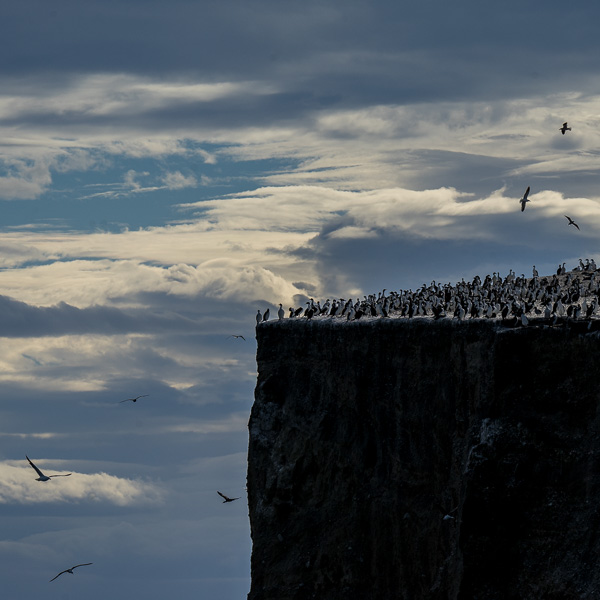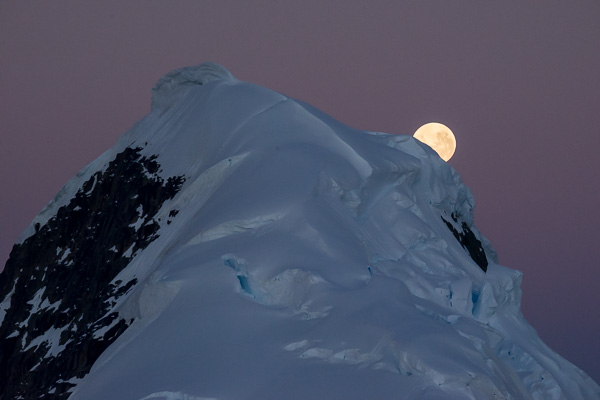


If one is in the business of designing cameras, then it should be safe to assume that there are at least a few people within the company’s design group that actually understand the needs of photographers. Regrettably this appears not to be the case.
As someone that has been using and reviewing cameras since well before the digital era, and also as a reviewer who has used almost every brand of digital camera system on the market, if not every model, let me point out some of the areas where manufacturers let us down.
No Live Highlight Warning
One of the great advantages of Live View is that it shows the image as it is being seen by the sensor. This means that the camera has the capability of displaying which areas of the image are going to be overexposed, or “blown” – as we photographers colloquially call it.
Many companies have therefore implemented some form of live highlight alert. It is often in the form of blinking and sometimes in the form of zebra stripes. Typically those camera makers with backgrounds that include the design and manufacture of video cameras use Zebras, because videographers have enjoyed this capability for years. Shooting video is like shooting JPGs, with limited bit depth and dynamic range and where avoiding blown highlights is critical.
I should point out that the camera makers that really got it even provide the ability to set the point at which highlights are warned, from 110% down to 70% (skin tones), and even allow two types of indications, each with a different level.
But, with an astonishing lack of understanding, there are still some major camera makers who don’t have any form of live highlight warning. Sure, all cameras will show a warning on instant review. But is it really too much to ask every camera maker to implement this properly in live view NOW!

Film-Based Exposure Metering
It is remarkable, but all digital cameras of which I am aware expose digital sensors as if they were film. In other words, the metering aim point is 18% grey.
While this was sensible for film, it makes no sense for digital. The cleanest stops are the ones in the highlight area, and these are where the most data is located. The noisiest stops are in the shadow areas and this is where each stop contains less and less data.
Putting the exposure so that it lies in the middle makes no sense. Imagine that you’re photographing a black cat sitting on a pile of coal. The camera will make it look like a grey cat sitting on a pile of grey coal. Now imagine that you’re photographing a white cat sitting in the snow. The camera will also expose this as a grey cat sitting on grey snow. Both of these are wrong. Indeed all photographs should be exposed so that the image is recorded as light as possible.
In other words, so that the exposure is as far to the right of the histogram as possible, without blowing the highlights. This will maximize the amount of light being captured and thus create a lower noise image. But that’s not what cameras do. Why not?
The answer that some camera makers have given me is that over-exposed looking images would not be what raw shooters want to see on their rear LCD. Also, camera generated JPGs need to look like fully baked images.
In my opinion these are bogus arguments. The cameras knows exactly what is happening to each pixel in an image in terms of exposure. This is how live highlight warnings are generated. There is therefore no reason why the camera can not adjust the actual exposure that is recorded so as to “expose to the right“, while still showing a normalized rear LCD image.
Also, in anticipation of this, the very smart folks at Adobe have had a data field in the DNG format for years that is available to indicate an exposure normalization value. This means that raw files could be shot that are properly exposed for digital, that appear normalized on the rear LCD, and also (optionally) in a raw processing program.
Now the challenge is out there. Who will be the first camera maker to create a camera that does proper digital exposure and gains between a one and three stop noise advantage in the process?
Auto ISO In Manual Exposure Mode
Auto-ISO capability is now pretty much universal. But several manufacturers disable it in Manual exposure mode. This is nuts!
I shoot in Manual much of the time. I set the shutter speed to the minimum that I think is needed for the given focal length that I’m using as well as the actual shooting situation. I set the Aperture for the desired depth of field and to optimize IQ. I then expect the camera to ride the Auto-ISO and set the required sensitivity to expose each shot properly. With many cameras now offering clean images up to as high as ISO 3200, or even higher, this is a strategy that works well much of the time.
But many cameras don’t allow this. Go to Manual mode and Auto-ISO becomes disengaged. Why? Why? Some makers get this right, so why can’t the others?

This issue also applies to exposure compensation. Some camera makers disable the compensation control when the aperture and shutter speed are set manually. No. This is not good. Adjust the ISO when exposure compensation is used in Manual mode. We are now some 15 years into the digital revolution. Stop making cameras as if they are still intended to shoot film.
Limited Bracketing Range
It amazes me that there are still DLSRs and CSCs that only offer one stop bracketing. What are these camera makers thinking? With most cameras now offering between 10 and 13 stops of dynamic range why do we get cameras that can’t bracket more than +/- 1 stop.
Many camera makers allow +/- 3 stops, and allow more than 3 bracketed exposures, but those that don’t need to wake up a smell the coffee.

Lorem ipsum dolor sit amet, consectetur adipiscing elit, sed do eiusmod tempor incididunt ut labore et dolore magna aliqua. Ut enim ad minim veniam, quis nostrud exercitation ullamco laboris nisi ut aliquip ex ea commodo consequat. Duis aute irure dolor in reprehenderit in voluptate velit esse cillum dolore eu fugiat nulla pariatur. Excepteur sint occaecat cupidatat non proident, sunt in culpa qui officia deserunt mollit anim id est laborum.

Lorem ipsum dolor sit amet, consectetur adipiscing elit, sed do eiusmod tempor incididunt ut labore et dolore magna aliqua. Ut enim ad minim veniam, quis nostrud exercitation ullamco laboris nisi ut aliquip ex ea commodo consequat. Duis aute irure dolor in reprehenderit in voluptate velit esse cillum dolore eu fugiat nulla pariatur. Excepteur sint occaecat cupidatat non proident, sunt in culpa qui officia deserunt mollit anim id est laborum.
Lorem ipsum dolor sit amet, consectetur adipiscing elit, sed do eiusmod tempor incididunt ut labore et dolore magna aliqua. Ut enim ad minim veniam, quis nostrud exercitation ullamco laboris nisi ut aliquip ex ea commodo consequat. Duis aute irure dolor in reprehenderit in voluptate velit esse cillum dolore eu fugiat nulla pariatur. Excepteur sint occaecat cupidatat non proident, sunt in culpa qui officia deserunt mollit anim id est laborum.
Lorem ipsum dolor sit amet, consectetur adipiscing elit, sed do eiusmod tempor incididunt ut labore et dolore magna aliqua. Ut enim ad minim veniam, quis nostrud exercitation ullamco laboris nisi ut aliquip ex ea commodo consequat. Duis aute irure dolor in reprehenderit in voluptate velit esse cillum dolore eu fugiat nulla pariatur. Excepteur sint occaecat cupidatat non proident, sunt in culpa qui officia deserunt mollit anim id est laborum.

Lorem ipsum dolor sit amet, consectetur adipiscing elit, sed do eiusmod tempor incididunt ut labore et dolore magna aliqua. Ut enim ad minim veniam, quis nostrud exercitation ullamco laboris nisi ut aliquip ex ea commodo consequat. Duis aute irure dolor in reprehenderit in voluptate velit esse cillum dolore eu fugiat nulla pariatur. Excepteur sint occaecat cupidatat non proident, sunt in culpa qui officia deserunt mollit anim id est laborum.
You May Also Enjoy...
Face in The Trees
Please use your browser's BACK button to return to the page that brought you here.
